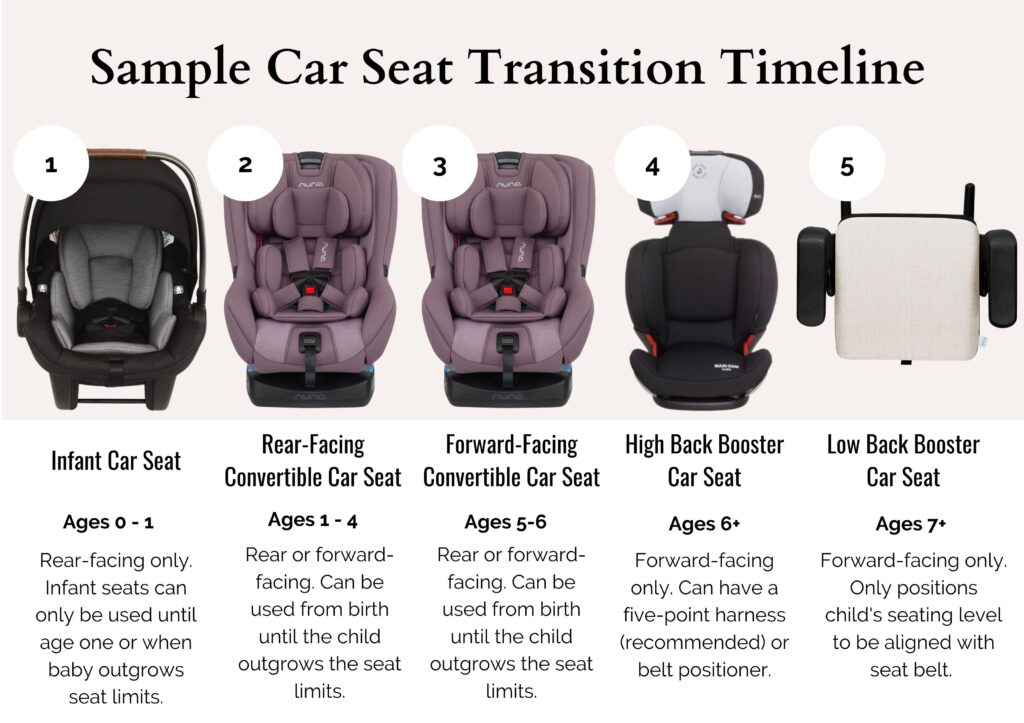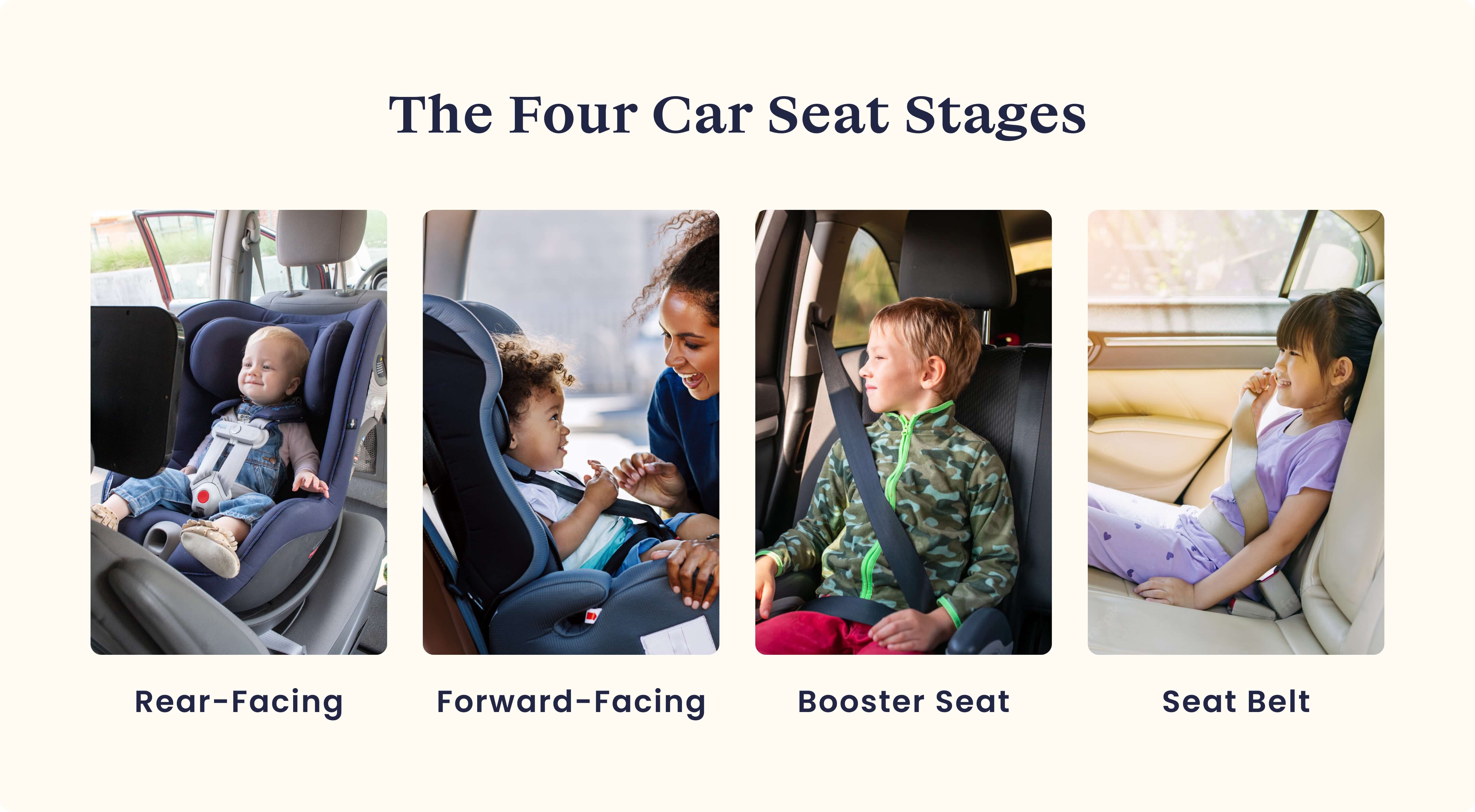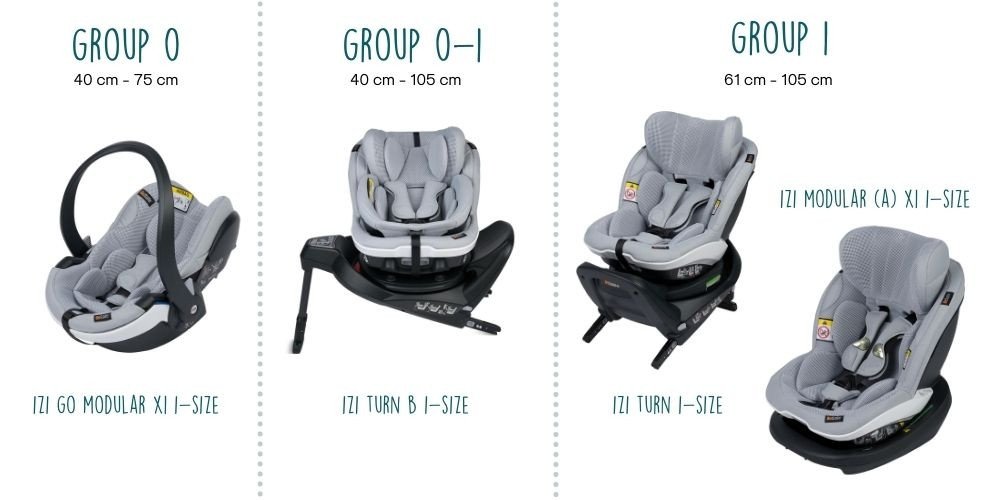Knowing when to change a baby car seat is crucial for safety. Parents often wonder about the right time to make this switch.
Understanding car seat transition guidelines can protect your child during car rides. Car seat changes can feel overwhelming. Different seats fit various stages of a child’s growth. As babies grow, their car seat needs change. Manufacturers design seats for specific weight and height limits.
Exceeding these limits can be unsafe. Safety experts recommend checking these limits regularly. Parents must also consider their child’s age. Infant seats, convertible seats, and boosters serve different age groups. Transitioning at the right time ensures your child’s comfort and safety. This guide will help you understand when to make these important changes. Stay informed to keep your little one safe on the road.
Recognizing Car Seat Transition Signs
Recognizing when to change your baby’s car seat is crucial for safety. As your child grows, different signs indicate it’s time for a transition. Paying attention to these signs ensures your child’s comfort and protection during travel. Understanding growth milestones, weight, and height limits can help make informed decisions.
Growth Milestones
Babies grow quickly during their first years. Watch for developmental changes. When your child reaches certain milestones, consider changing the car seat. For instance, if your child can sit up unassisted, they might need a seat with better support. Observing these milestones helps ensure a safe car seat fit.
Weight And Height Limits
Each car seat comes with specific weight and height restrictions. Regularly check these limits to ensure your child fits safely. If your baby exceeds the seat’s weight or height, it’s time for an upgrade. Using a seat beyond its limits can compromise safety. Always refer to the manufacturer’s guidelines for accurate information.
Types Of Car Seats
Choosing the right car seat for your baby is crucial for safety. Infant seats are perfect for newborns but need changing once your child exceeds the weight or height limit. Convertible seats offer longer use, adapting to your growing child’s needs.
Regularly check guidelines to ensure proper fit and protection.
Choosing the right car seat for your baby is not just about comfort; it’s about safety and convenience too. As your child grows, their car seat needs will evolve. Understanding the different types of car seats and knowing when to switch can help ensure your child is safe on the road. Let’s break it down.Infant Car Seats
Infant car seats are designed specifically for newborns and smaller babies, usually up to 22-35 pounds. These seats are rear-facing, which is the safest position for infants. They come with a detachable carrier, making it easy to transport your baby without waking them up.Isn’t it a relief to carry your sleeping baby from the car to the house without a fuss? However, once your baby exceeds the weight limit or their head reaches the top of the seat, it’s time to consider a different option.Convertible Car Seats
Convertible car seats are a versatile choice that can grow with your child. They can be used as rear-facing for infants and then converted to forward-facing as your child grows. This feature makes them a cost-effective option in the long run.Remember the time you had to juggle multiple items while shopping? Having a convertible seat means fewer transitions and more convenience. When your child outgrows the rear-facing position, typically around 40 pounds, you can switch to forward-facing without needing a new seat.Knowing the right time to transition between these car seats can make all the difference in ensuring your child’s safety and comfort. So, are you ready to make the best choice for your little one’s next car ride?Age Recommendations For Car Seats
Choosing the right car seat for your child is essential. Safety is the top priority. Age plays a crucial role in selecting the right car seat. Different stages require different seat types. Understanding these age recommendations helps ensure your child’s safety on the road.
Newborn To One Year
Newborns need rear-facing car seats. These seats provide the best protection. Babies should remain in rear-facing seats until age one. Some experts suggest keeping them rear-facing longer. Weight and height limits also matter. Always check the seat’s instructions. Safety first.
Toddlers And Preschoolers
Toddlers transition to forward-facing seats. This usually occurs after age one. Ensure they meet the seat’s weight limit. Forward-facing seats have harnesses for added safety. Preschoolers may continue using these seats. Height and weight limits are crucial here too. Always prioritize safety guidelines.

Credit: www.childrens.com
Safety Features To Consider
Consider weight and height limits when deciding to change your baby’s car seat. Check for visible wear and expiration dates. Ensure side impact protection and secure harness systems for enhanced safety.
Ensuring your baby’s safety on the road involves more than just securing them in a car seat. It’s crucial to consider specific safety features when deciding whether it’s time to change their car seat. These features can make a significant difference in the protection they provide. So, what should you look for to keep your little one safe and sound?Five-point Harness
A five-point harness is a must-have feature in a baby car seat. It includes two shoulder straps, two waist straps, and a crotch strap. This system ensures your baby is securely fastened, distributing the impact force across the body in case of a collision.Imagine driving down a bumpy road. Wouldn’t you want your child to be held snugly, minimizing any risk of injury? A five-point harness does exactly that by keeping your baby in place.Regularly check the harness for wear and tear. Adjust it as your child grows to maintain the right fit. Have you noticed that snug feeling when you wear a seatbelt properly? Your baby deserves that same level of security.Side Impact Protection
Another critical feature to consider is side impact protection. This typically involves additional padding or reinforced materials on the sides of the car seat. It safeguards your baby’s head and torso during a side collision.Think about how often you drive near intersections or in busy traffic. Side impacts are common in such situations. Wouldn’t you feel more at ease knowing your child is protected from all angles?Choose a seat with robust side impact protection. Look for those with deep side wings and energy-absorbing foam. These elements work together to absorb shock and reduce the risk of injury during an accident.Have you ever experienced that peace of mind knowing your child’s every need is met? Prioritizing these safety features in a car seat can give you that assurance every time you hit the road.Proper Installation Techniques
Ensuring a baby’s safety starts with correct car seat installation. A well-installed car seat shields your child during travel. Misalignment can risk your child’s safety. Follow these simple steps for peace of mind.
Latch System Use
The Latch system simplifies car seat installation. Many cars after 2002 include this system. Locate the lower anchors in your car seat’s back. Attach the car seat’s hooks to these anchors. Ensure a tight fit. Wiggle the seat; it should not move more than an inch. The top tether reduces forward movement. Attach it to the anchor behind the seat.
Seat Belt Installation
Some cars may not support the Latch system. Use the seat belt for installation in such cases. Thread the seat belt through the car seat’s belt path. Buckle the seat belt securely. Lock the seat belt to prevent it from loosening. A locked seat belt ensures the car seat stays in place. Check for movement; it should be minimal. Confirm the seat is stable before placing your baby.

Credit: www.agevillage.com
Common Mistakes In Car Seat Use
Many parents delay switching baby car seats due to uncertainty. Car seat changes depend on height, weight, and age. Misjudging these factors risks safety.
Changing a baby car seat can seem straightforward, yet many parents unknowingly make mistakes that could compromise their child’s safety. Understanding common errors can help you ensure your baby is securely protected. From loose straps to incorrect angles, these mistakes often go unnoticed but can have serious consequences. So, how can you avoid these pitfalls?Loose Straps
One of the most frequent mistakes is not securing the straps tightly enough. It’s easy to think that a gentle pull is enough, but in reality, straps should be snug.Imagine driving on a bumpy road; loose straps can allow your baby to move around too much. Always check the tightness of the straps by using the “pinch test.” If you can pinch any fabric between your fingers, they need to be tightened.Don’t underestimate the importance of strap tightness. A quick check can make a world of difference in a car accident.Incorrect Angle
Another common mistake is installing the car seat at the wrong angle. This might seem trivial, but it can affect your baby’s comfort and safety.Think about those times when your baby looks uncomfortable or slumped over. If the seat is too reclined, it can pose a suffocation risk; too upright, it can be hard on their spine.Check your car seat manual for the recommended angle. Most seats have indicators to guide you. Always adjust and readjust to ensure your baby is sitting in the safest position.Are you confident in your car seat setup? These small tweaks could be life-saving.Checking For Recalls And Expiry Dates
Ensuring your baby’s car seat is safe involves more than proper installation. It’s vital to check for recalls and expiry dates. These checks guarantee your child’s safety during every trip. Knowing when to replace a car seat keeps your baby secure. Regularly updating your knowledge about recalls and expiration helps maintain peace of mind.
Recall Notices
Manufacturers sometimes recall car seats for safety defects. These defects can compromise safety during an accident. Checking for recall notices is essential. Visit government websites for updated recall information. Search the manufacturer’s site for specific recall details. Register your car seat for timely recall alerts. Stay informed to ensure your child’s safety.
Expiration Guidelines
Car seats have expiration dates. These dates ensure the seat remains effective. Materials can degrade over time, reducing safety. Check the expiration sticker on the car seat. Expired seats may not protect your child adequately. Replace the seat before the expiration date. This ensures your baby remains safe on the road.
Travel Safety Beyond The Car Seat
Changing a baby’s car seat at the right time ensures safety during travel. Consider the child’s weight and height to decide when to switch. Always check the manufacturer’s guidelines for age and size limits.
Ensuring your child’s safety doesn’t stop when you step out of the car. Traveling with your baby involves various modes of transport, each with its own set of safety considerations. As parents, you might wonder how to keep your little one safe on an airplane or when using public transport. Let’s explore practical tips and insights on ensuring travel safety beyond the car seat.Airplane Travel Tips
Air travel with a baby requires thoughtful preparation. Bring a car seat approved for airplane use. This not only ensures safety but also keeps your baby comfortable and secure. Imagine your peace of mind knowing your baby is snug in their familiar seat at 30,000 feet.Check with the airline before your journey. Policies on car seats can vary. Some airlines may require you to reserve a separate seat for your infant’s car seat. Consider a lightweight, compact car seat for ease of transport through airports.Prepare for air pressure changes. Babies can experience discomfort during takeoff and landing. Offer a bottle or pacifier to help ease ear pressure. This simple action can make a world of difference in keeping your baby calm.Public Transport Considerations
Using public transport with your baby can be a practical choice. Always carry a compact stroller or baby carrier. This ensures that you can navigate buses or trains with ease while keeping your baby secure.Check the schedule and plan your journey. Avoid peak hours to ensure you have ample space and time to board. A crowded bus or train can be stressful, especially with a baby in tow.Safety on public transport extends beyond just physical security. Be mindful of your surroundings and belongings. Keep your baby’s essentials close, and stay alert to ensure a smooth journey.Traveling with a baby involves thinking ahead. How can these simple measures enhance your travel experience? By preparing adequately, you can turn potential challenges into manageable tasks. Each journey is an opportunity to create wonderful memories with your child. Prioritizing safety allows you to focus on enjoying the adventure together.
Credit: www.keuka-studios.com
Frequently Asked Questions
How Long Does A Baby Stay In The Infant Car Seat?
Babies typically stay in an infant car seat until they reach the seat’s maximum weight or height limit, usually around 12 months. It’s essential to follow the car seat manufacturer’s guidelines for safety. Transition to a convertible seat when your baby outgrows the infant seat.
What Age Do You Change Your Car Seat From A Newborn?
Change your newborn’s car seat once they outgrow the infant seat, usually around 9-12 months. Transition to a rear-facing convertible seat designed for toddlers. Always check the manufacturer’s guidelines for height and weight limits to ensure safety. Regularly review car seat recommendations to keep your child protected.
At What Age Do Babies Outgrow An Infant Car Seat?
Babies typically outgrow infant car seats between 9 to 12 months. Always check the car seat’s weight and height limits. Transition to a convertible car seat when they exceed these limits for safety. Consult your pediatrician for personalized advice on your child’s readiness to switch seats.
How Do I Know When To Change My Child’s Car Seat?
Check the car seat’s weight and height limits. Change seats when your child outgrows these limits. Ensure the new seat fits your child’s age, size, and development. Regularly inspect for wear and tear or expiration. Always follow safety guidelines and consult the manufacturer’s instructions for proper usage.
What Age Should A Baby Switch Car Seats?
Babies switch car seats based on weight and height, not age. Always check the car seat’s guidelines.
Conclusion
Choosing the right time to change a baby car seat is crucial. Safety comes first. Always check the car seat’s weight and height limits. Follow the manufacturer’s guidelines closely. Kids grow fast, so stay aware. Regularly inspect the seat for wear and tear.
Consult your local laws on car seat requirements. A proper fit ensures your child’s safety during travel. Make sure the harness is snug and secure. Always prioritize safety and comfort for your little one. Stay informed and proactive to protect your child.
Remember, a safe journey starts with the right car seat.





